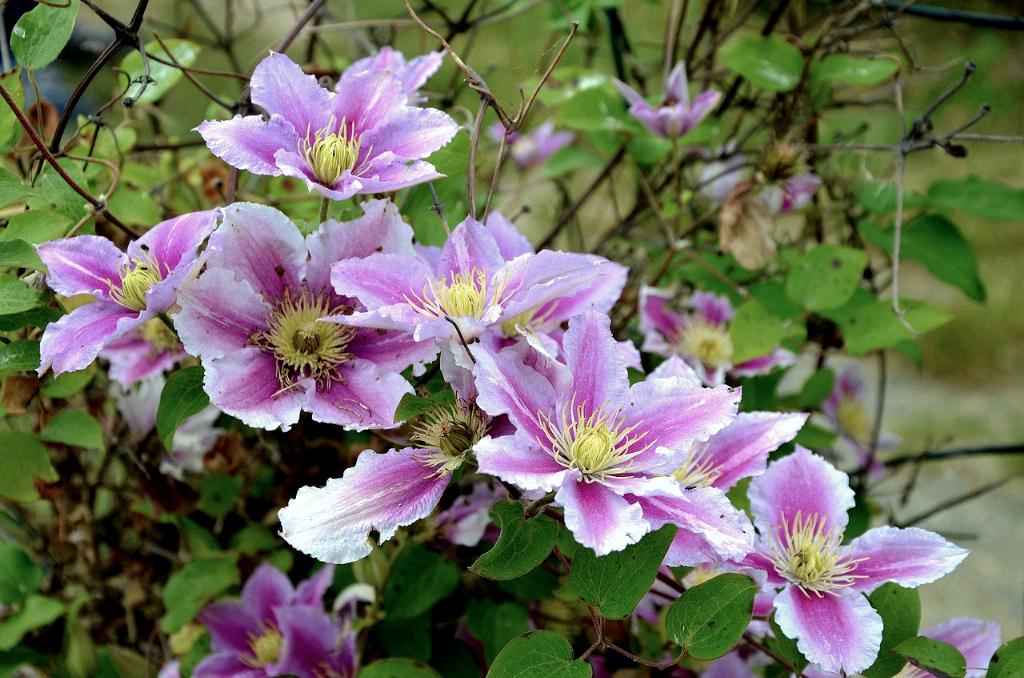Before delving into the best time to cut back your clematis, it’s crucial to comprehend how these plants grow. Clematis are vigorous climbers that can produce an abundance of beautiful flowers. Knowing the different growth characteristics of clematis varieties is essential when it comes to pruning to ensure optimal health and blooming.
Factors to Consider Before Cutting Clematis Back
Several factors influence the ideal timing for cutting back clematis. First, consider the specific clematis group your plant belongs to, as different groups require pruning at distinct times. Additionally, take into account the time of year, the growth stage of your clematis, and the blooming pattern it follows. These factors will guide you in determining the most suitable moment to trim your plant.
Pruning Clematis Based on Group Type
Group 1: Spring-flowering Clematis
Spring-flowering clematis typically bloom on old wood, meaning they develop flowers on the previous season’s growth. To maintain their flowering potential, prune these varieties right after they finish blooming.
Group 2: Large-flowered Clematis
Large-flowered clematis, which bloom both on old and new wood, should be pruned after their initial spring flowering and then lightly trimmed again in late winter or early spring to encourage new growth.
Group 3: Late-flowering Clematis
Late-flowering clematis bloom on new wood, meaning they produce flowers on the current season’s growth. These varieties benefit from a hard pruning in late winter or early spring to promote vigorous growth.
Best Practices for Pruning Clematis
When pruning clematis, always use sharp and clean tools to prevent damage to the plant. Make cuts at a 45-degree angle just above a set of healthy buds. Remove any dead or tangled vines and aim to maintain a balanced and open framework to allow for optimal air circulation and sunlight exposure.
Tools Needed for Cutting Clematis Back
To effectively prune clematis, you’ll require a pair of sharp bypass pruners, gardening gloves for protection, and possibly pruning shears for thicker branches. Having the right tools on hand will make the pruning process more manageable and ensure clean cuts that promote plant health.
Step-by-Step Guide to Cutting Clematis Back
1. Identify the clematis group.
2. Select the appropriate pruning time based on the group type.
3. Inspect the plant for damaged or weak growth.
4. Begin by removing dead or diseased stems.
5. Trim back the remaining growth according to the specific requirements of your clematis group.
Common Mistakes to Avoid When Pruning Clematis
One common mistake many gardeners make when pruning clematis is cutting the plant back at the wrong time, potentially affecting its flowering capacity. Avoid over-pruning, which can lead to reduced blooming, and always ensure you’re using the correct techniques for your specific clematis variety.
Conclusion
Knowing when to cut back your clematis is crucial for maintaining a healthy and vibrant plant that produces an abundance of stunning blooms. By understanding the growth patterns of different clematis groups, following best practices for pruning, and avoiding common mistakes, you’ll set your plant up for success. Remember, each clematis variety may have unique needs, so be sure to tailor your pruning approach accordingly to enjoy a flourishing garden filled with colorful clematis flowers.

